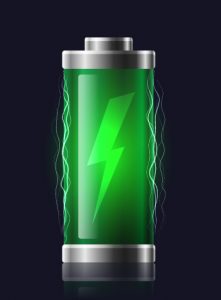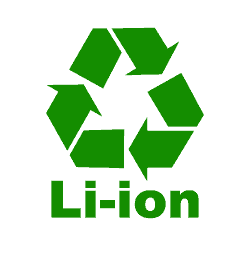
Well, here’s a surprise that should come as no surprise. The EV wave is coming bigger and faster—five years faster—than previously expected.
In a brand new report from EY Consultants, the EY Mobility Lens Forecaster, an artificial intelligence (AI) powered forecast modeling tool that provides an outlook for the supply and demand of mobility products and services through 2050, shows that by 2028 EV sales in Europe will surpass those of other powertrains.
This trend is projected to be repeated in China by 2033 and in the US by 2036. The analysis also shows that by 2045, non-EV sales will shrink to a whopping less than one percent of overall sales.[1]
According to Randall Miller, EY Global Advanced Manufacturing & Mobility Leader:
“A mix of changing consumer attitudes, ambitious climate-focused regulations and technology evolution is about to change the landscape of vehicle buying forever. While the automotive industry has begun to more fully embrace the move toward electrification, the impact of this seismic shift is arriving sooner than many expected."
"This new outlook also has implications for governments and energy industries in terms of infrastructure and electricity generation and storage, and forward-looking organizations are already using this data to help ensure a smooth transition to this new EV-dominated market, which will be here much sooner than expected.”
From the EV adoption point of view alone, battery technology will be hot for a long time to come. And we’re not even talking about widespread electrification of the world’s energy systems and portable electronic devices that will also depend on plentiful battery storage.
That’s why the battery storage ecosystem looks attractive to so many savvy investors. That ecosystem includes everything from raw materials production through recycling, and it stands to reason that with burgeoning demand and broader applications, the battery storage ecosystem is going to expand a lot—and for a long time.
It’s useful to sort out just which battery technologies, and there are a number of them, will make the market and/or dominate. There’s a nice report from Rocky Mountain Institute that explains the leading technologies. You can find it here.

Right now, it seems pretty obvious that lithium ion (Li-ion) will be the leading storage solution for some time. But that doesn’t mean Li-ion is winner take all.
Rapid performance improvements coupled with dramatic cost reductions have made Li-ion the prevalent battery technology.
Its characteristic high-energy density (relative to its predecessors) has made it ideal for personal electronics and mobility applications, as most consumers are content to recharge these devices once or twice a day.
As Li-ion production has scaled to meet growing EV demand, manufacturing and soft costs have declined precipitously, making longer-duration applications seem almost within reach.
Unfortunately, analysts and investors widely agree that the costs and characteristics of Li-ion (i.e., high-power, short-duration, shallow depth of discharge, or limited life cycle) make it less suitable for longer duration grid-tied, longer-range or weight-sensitive mobile applications.[2]
Still, Li-ion is the big kid on the block. Below are some investment targets that will give you exposure to the Li-ion ecosystem and more.
Lithium is the primary metal in today’s leading battery technology, so it makes sense to look at lithium miners.
Piedmont Lithium Limited (NASDAQ: PLL)
Piedmont Lithium is developing a world-class integrated lithium business in the United States, enabling the transition to a net zero world and the creation of a clean energy economy in America—according to their corporate website.[3]
The company’s location in the Carolina Tin Spodumene Belt of North Carolina, the cradle of the lithium industry, positions the company to be one of the world’s lowest cost producers of lithium hydroxide, and the most strategically located to serve the fast-growing US electric vehicle supply chain.
The unique geographic proximity of resources, production operations, and prospective customers positions the company to be the most sustainable provider of lithium hydroxide in the world, and should allow Piedmont to play a pivotal role in supporting the US move to the electrification of transportation and energy storage.
Neo Lithium (OTCQX: NTTHF / TSX-V: NLC)
Neo Lithium’s 3Q Project is the preeminent lithium brine asset in the world, and one of the best lithium brine projects by any metric.[4] In terms of grade, it is in the top three worldwide. In terms of size, it is the seventh largest brine project with significant blue-sky potential. Finally, in terms of impurities, it has the lowest impurities of any known salar. These qualities allow for a low-cost process with a very low capital intensity when compared to other brine projects worldwide.
Albemarle Corporation (NYSE: ALB)
Albemarle is the industry leader in lithium and lithium derivatives—one of the highest growth markets in the specialty chemicals industry. The company’s natural resource position and technology leadership means Albemarle can execute an aggressive growth strategy.[5]
Albemarle controls a diverse and high-quality network of natural resources that are geographically situated in low-risk environments with good infrastructure. The company maintains the strongest vertical position in the industry, from raw material extraction to specialty product manufacturing.
Albemarle’s global footprint and extensive production capacity, which is currently expanding, arguably makes them the most reliable and sustainable supply network in the industry. They boast the lowest cost position for lithium carbonate and lithium hydroxide while providing the highest quality products.
Livent Corporation (NYSE: LTHM)
Livent is focused on producing performance lithium compounds. Its primary products include battery-grade lithium hydroxide, butyllithium, and high purity lithium metal. It produces lithium compounds for use in applications that have specific performance requirements, including battery-grade lithium hydroxide for use in high performance lithium-ion batteries.[6]
Livent also supplies butyl lithium, which is used as a synthesizer in the production of polymers and pharmaceutical products. In addition, the company supplies a range of specialty lithium compounds including high purity lithium metal, which is used in the production of lightweight materials for aerospace applications and non-rechargeable batteries.

Solid-state technology is poised to massively disrupt the storage industry by unlocking new opportunities for cheap, safe, and high-performing batteries.
It is expected that solid state will be adopted first by OEMs currently pursuing advanced Li-ion due to its safety and temperature characteristics.
Current Li-ion batteries have flammable liquid electrolytes. Thermal runaway is a persistent risk across all applications, and Li-ion will face increased scrutiny as the market continues its exponential growth.
Solid-state batteries, on the other hand, are nonflammable, and could improve battery life and improve performance in cold and hot climates. Safety regulations will preclude the use of Li-ion batteries in applications such as air travel, and they also face shipping constraints.
Solid state will enable higher energy density, opening additional market opportunities and will enable the use of much cheaper materials and enable very inexpensive rechargeable alkaline batteries.
Solid Power (Private – Slated to Go Public)
US company Solid Power plans to begin pilot production of solid-state batteries suitable for use in electric vehicles by early 2022, having received an additional $130 million in funding from existing investors Ford, BMW and Volta Energy Technologies.
Solid Power says that from the beginning of 2022 it will be able to supply the “full-scale” 100 amp-hour cells to Ford and BMW, who will begin to qualify and test them for use in electric vehicles.
Solid Power replaces the flammable liquid electrolyte in a conventional lithium-ion battery with a proprietary sulfide solid electrolyte. As a result, Solid Power's all-solid-state batteries are safer and more stable across a broad temperature range; can provide a 50 to 75 percent increase in energy density compared to the best available rechargeable batteries; enable cheaper, more energy-dense battery pack designs; and are compatible with traditional lithium-ion manufacturing processes.[7]
On June 15, the company announced a definitive agreement for a business combination that would result in Solid Power becoming a publicly listed company. Upon closing of the transaction, the combined company will be named “Solid Power, Inc.” and its common stock and warrants are expected to trade on NASDAQ under the new ticker symbol “SLDP” and “SLDP WS,” respectively.
STEM (NYSE: STEM)

Stem delivers and operates smart battery storage solutions that maximize renewable energy generation and help build a cleaner, more resilient grid. Customers include Fortune 500 corporate energy users, project developers and installers, and utilities and independent power producers.[8]
Stem’s market-leading Athena™ software uses advanced artificial intelligence and machine learning to automatically switch between battery power, onsite generation and grid power. Athena™ helps lower energy costs, stabilize the grid, reduce carbon emissions, and solve renewable intermittency across the world’s largest network of distributed energy storage systems.
Stem has been a pioneer in deploying battery storage systems in combination with smart software that enables commercial and industrial electricity users to lower their electricity bills from reducing their draw of power from the grid at peak times, while also enrolling the batteries in various grid, energy and capacity services programs to earn revenues.

When it comes to large-scale and grid storage, investors may want to look at flow batteries.
Specifically, the vanadium redox flow battery is a promising technology for grid scale energy storage. The tanks of reactants flow through a membrane and charge is added or removed as the catholyte or anolyte is circulated.
The large capacity can be used for load balancing on grids and for storing energy from intermittent sources such as wind and photovoltaics.
Oregon-based ESS Tech, Inc, a manufacturer of long-duration iron flow batteries for commercial and utility-scale energy storage applications, uses a unique electrolyte chemistry relying on iron, salt and water for a battery the company says is safe and does not rely on any rare earth elements.[9]
The batteries can provide four to 12 hours of energy capacity, and in February the company debuted a containerized large-scale storage solution that can be designed to meet the needs of large clients, like power providers and manufacturers installing on-site renewable energy.
ESS Tech and ACON S2 Acquisition Corp. (NASDAQ: STWO), a publicly traded special purpose acquisition company, have entered into a definitive agreement for a business combination that will result in ESS becoming a publicly listed company.

Li-Cycle, North America’s largest lithium-ion battery resource recycling company, has entered into a definitive business combination agreement with Peridot Acquisition Corp. (NYSE: PDAC).
Upon closing, the combined company will be renamed Li-Cycle Holdings Corp. and will be listed on the New York Stock Exchange under the new ticker symbol “LICY.”
The company plans to build a US $175 million plant in Rochester, N.Y., on the grounds of what used to be the Eastman Kodak complex. When completed, it will be the largest lithium-ion battery-recycling plant in North America.
Li-Cycle utilizes a breakthrough, commercial process for sustainably recovering critical high-grade materials from battery manufacturing scrap and end-of-life batteries, creating a closed-loop, domestically sourced lithium-ion battery supply chain. Li-Cycle patented technology enables a shift away from legacy thermal recycling technologies, which can emit harmful emissions and result in lower recovery rates.
The company has a robust customer network, including more than 40 commercial contracts with blue chip suppliers and off-take agreements through 2030. Li-Cycle’s commercial battery supply customers include 14 of the largest global automotive and battery manufacturers.[10]
The amount of investment required to achieve global decarbonization is, by every account, almost inconceivable. Ultimately, that means a vast array of opportunities for the savvy investor. Battery storage is just one subsector of the post-carbon economy, but it’s a critical component in electrification of the world’s energy systems.
This, by the way, is not some imagined future we’re talking about. It’s happening here and now. How can anybody doubt that the post-carbon bull market is one bull with the energy to run decades?

Blake Desaulniers, Contributor
for Investors News Service
P.S. To discover more opportunities in the hottest sectors in North America, sign up now to the Financial News Now newsletter to get the latest updates and investment ideas directly in your inbox!
DISCLAIMER: Investing in any securities is highly speculative. Please be sure to always do your own due diligence before making any investment decisions. Read our full disclaimer here.
[1] https://www.ey.com/en_au/news/2021/06/electric-vehicles-to-dominate-sales-five-years-sooner-than-expected-ey-analysis
[2] https://rmi.org/wp-content/uploads/2019/10/rmi_breakthrough_batteries.pdf
[3] https://piedmontlithium.com
[4] https://www.neolithium.ca
[5] https://www.albemarle.com/businesses/lithium
[6] https://livent.com/company-overview/
[7] https://investors.solidpowerbattery.com/home/default.aspx#about-us
[8] https://www.stem.com
[9] https://essinc.com
[10] https://li-cycle.com